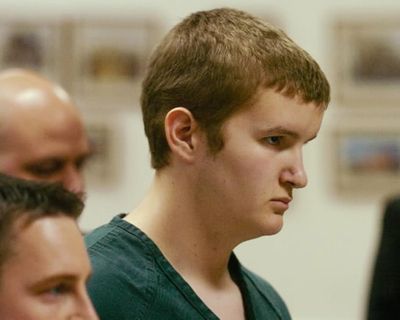In 2004, he walked into school with a shotgun. Today – from prison – he weighs in on Parkland.

On an icy Monday morning in February 2004, Jon Romano was hunched in a bathroom stall on the third floor of his high school outside of Albany, New York, tapping out a text message to his few friends.
“I’m in school with shot gun,” he wrote, the New York Times would later report. “Get out.”
Clad in a long black leather coat, the 16-year-old then washed his hands, picked up a brand-new Winchester 12-gauge pump-action shotgun, and stepped into a hallway at Columbia High School. He fired two blasts before Assistant Principal John Sawchuk tackled the 6-foot-2, 230-pound teenager. As the two struggled, a third shot ripped from the gun, hitting the legs of a special-education teacher named Michael Bennett. Although bullets came close enough to graze a student’s baseball cap, no one else was hit. There were no fatalities.
More than a decade later, the shooter not only credits Sawchuk with saving his classmates but also his own life. Last week, prompted by a column in his hometown paper revisiting his 2004 attack in light of the recent school shooting in Parkland, Florida, Romano wrote a letter to the Times Union.
“John Sawchuk is a hero who I owe my life to,” Romano wrote from Coxsackie Correctional Facility in New York, where he is serving a 20-year-sentence. “I know that every time another horrible shooting happens, he and all of my victims are hurt all over again by what I did to them. I want to take away their pain, but knowing I cannot, I want to prevent others from experiencing this pain.”
The letter – a rare look inside the matured mind of a surviving mass shooter – expressed regret about the 2004 incident and solidarity with the Marjory Stoneman Douglas High School students now pressing for gun control.
“I believe the students of Marjory Stoneman Douglas High School in Parkland are courageous and inspiring for speaking out and demanding action from politicians,” Romano wrote. “Everyone nationwide should follow and accept nothing less than meaningful, life-saving policy changes from their representatives. Only then could this generation be the last generation that lives in a nation plagued by gun violence.”
Mass shooters do not usually survive the carnage they create, much less provide later thoughts about their younger selves. As the Sun-Sentinel reported in the wake of the attack on Stoneman Douglas last month, of the 10 deadliest mass shootings in U.S. history, Nikolas Cruz, who is charged in the Parkland massacre, is the only gunman or suspected gunman to survive his attack.
In 2013, Adam Lankford, an associate professor of criminal justice at the University of Alabama, published a study about survival rates of mass shooters based on a statistical analysis of 185 incidents in which two or more people were killed or injured. As Popular Science reported, the results showed that mass shooters died in 48 percent of the attacks, 38 percent by suicide and the rest by “suicide by cop.” The study also showed that for every person a mass shooter killed, the likelihood of their death rose by 1.2 times. For every weapon a shooter carried, the shooter was 1.73 times more likely to die.
This leaves law enforcement officials with little insight into the minds of mass shooters – creating a dangerous hole for authorities trying to devise safety nets to prevent another attack.
In a rare exception, in October 2014, Esquire’s Tom Junod spent time with an unnamed man who as a teenager was stopped before carrying out an attack.
“What did I want? I wanted release,” the would-be mass shooter told Junod. “It’s not a desire for death. It’s a desire for escape – transport and escape. You’ve run out of options, and so you think of changing your life in the craziest way possible – something where you won’t be able to go back. It’s almost a cure for who you are. You know, maybe if this happened, I’d feel calm. I’d feel the way they do. I’d feel peace.”
Romano pushed back against the stereotypical portrayal of mass shooters even in 2004. After his arrest, police found a long rambling note by Romano at his home.
“I’m NOT A MONSTER,” the note read. “How am I different than what the media says school shooters are?” he added, before listing his favorite humorous television shows, including “Family Guy” and “Saturday Night Live.”
“I like to laugh! Comedies are good! I’m not what the media says I should be.”
In December 2004, Romano pleaded guilty to attempted murder and reckless endangerment. He was given a 20-year sentence.
In his recent note to the Times Union, he pledged to “advocate for gun safety and mental health reform after my release in 2021.”